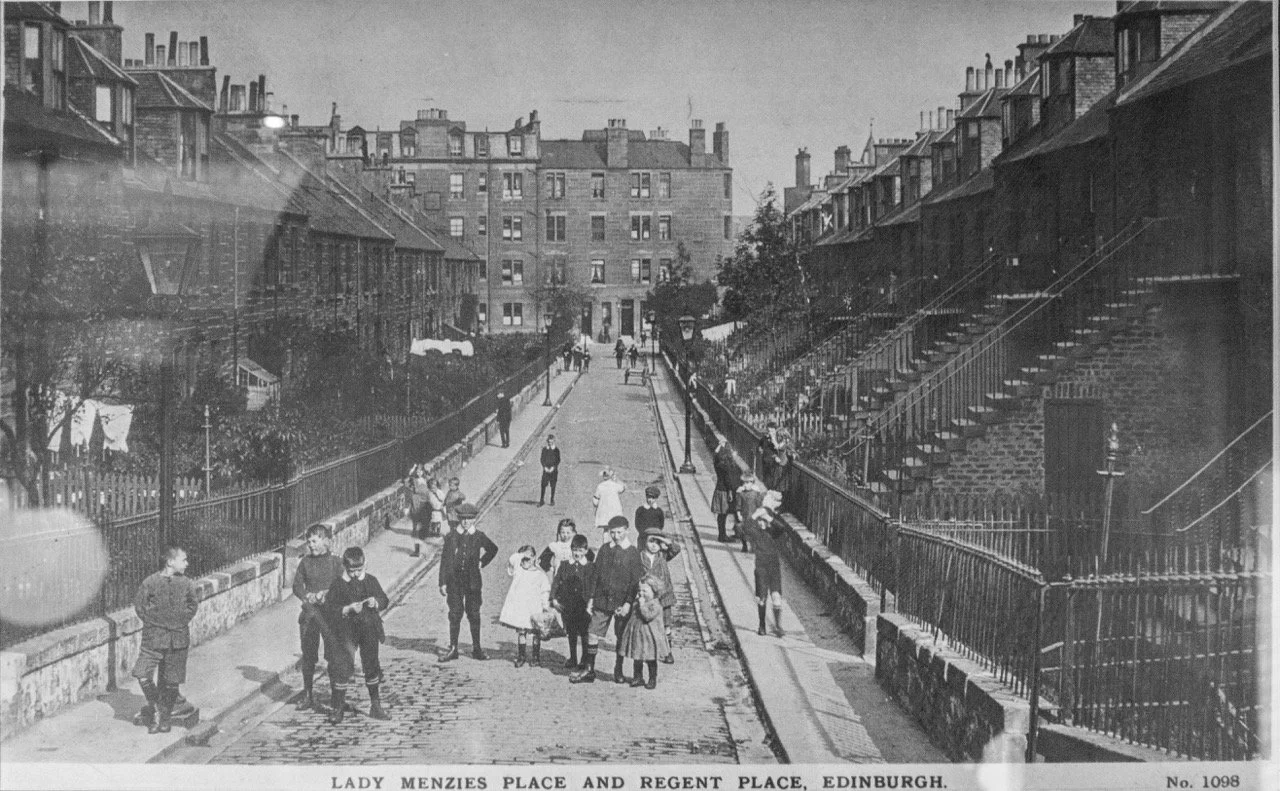History of the abbeyhill colonies
Adversity can lead to great things and when a group of builders found themselves locked out of their building sites due to a dispute about working hours in 1861, their three month ban lead to some creative thinking - the formation of the Edinburgh Co-operative Building Company (ECBC).
In the 100 years between 1800 and 1900 Edinburgh saw huge changes with the arrival of the railways, industrial expansion and massive population growth. Prior to the 1860s Edinburgh largely consisted of just the Old Town and the New Town with some surrounding villages; the Victorian tenements we’re so familiar with today had yet to be built. Unable to afford the more expensive rents of the New Town the many rural and migrant workers, who were flocking to the city with the onset of the Industrial Revolution, were forced to live in the increasingly overcrowded, unsanitary and polluted Old Town. Although there was much concern among the city leaders and social reformers about the physical health and moral well-being of the people living in the Old Town a countrywide financial crisis restricted any meaningful response from Edinburgh’s civic authorities.
Into this breach stepped a new organisation – the Edinburgh Cooperative Building Company (ECBC). Central to its mission was a cooperative spirit that was reflected both in its adoption of the beehive motif - which the current day Colony of Artists have adopted - and in the ultimate design of the homes constructed: built in rows, flat upon each other, like a Colony of bees. Established by seven stonemasons in 1861, the ECBC sought to provide homes for workers, built by workers - the group comprised many different trades: stonemasons, plasterers, plumbers and others sympathetic to their aims. One of Scotland’s earliest Limited Liability Companies, the ECBC were both innovative and inspirational. Company shares could be bought in instalments and houses could be paid for over 14 years using a deposit and loan scheme (essentially an early form of mortgage). This made investment opportunities and homeownership affordable to working families on lower incomes for the first time. Unusually for the time, women could not only invest in the company but also had the same rights as male investors.
By 1911 over 2000 Colony style houses had been constructed on 11 sites. Many were owned by artisan classes in an era when mortgages did not exist.
In 1800 the area where the Abbeyhill Colonies are now located was still open land and the only major thoroughfare was Easter Road, leading from Edinburgh’s Old Town to the port of Leith. By the time the construction of the Abbeyhill Colonies (also known as Norton Park or Maryfield) had begun in 1867: London Road, Montrose Terrace and Regent Road had been built; railway branch-lines were beginning to dissect the landscape; and industries, such as printworks, glass works, breweries and metal foundries, were relocating to the spacious green-field sites on the city’s eastern periphery.
Taking a decade to complete the Abbeyhill Colonies are set in six terraces providing 285 dwellings. They follow the distinctive early ‘colony’ design, developed through a clever and economic use of space. Each plot had a lower and upper dwelling, the shared roof and foundations reduced the building costs while windows on both sides of each individual property improved both ventilation and natural light. The use of external forestairs (a feature of traditional Scottish architecture) allowed each dwelling to have its own front door and garden, something that was typically far beyond the pocket of most lower-class families. Inside, each property had its own parlour or front-room; a kitchen with a range plus a sink and piped cold-water; a WC and a bedroom. The Colonies provided high quality accommodation with a level of amenities that were previously unheard of for Edinburgh’s urban workers.
Curiously the terraces and their dwellings are named and numbered according their physical block of housing, rather than the roadway between them. So, for example, the lower colony flat of 22 Lady Menzies Place sits opposite the upper colony flat of 23 Regent Place. This made perfect sense at the time, as each terrace was completed before the building of the next one began, but causes much confusion for delivery drivers and Colony visitors today! From the very beginning the Abbeyhill Colonies were home to a wide variety of workers – printers, railway workers, clerks, stonemasons, jewellers, shopkeepers, milliners, nurses and teachers – along with widows and retirees. The Colonies were a nice place to live and fostered both a sense of community and of identity. Their layout of individual gardens and no through-roads made it safe, quiet and neighbourly; good quality housing with improved facilities made for healthier inhabitants; while home-ownership gave families a sense of security. The design of the buildings did result in a certain amount of over looking and gossiping but this feature has also contributed to its sense of identity and community that is quite unique in Edinburgh.
Today, 150 years after they were first built, the Abbeyhill Colonies continue to have a strong sense of community and are home to many modern-day artists giving the Abbeyhill Colonies a new sense of identity in the 21st century.
The Colony of Artists Exhibition started in 2005, when 9 Artists decided to open their homes for the weekend, forming a series of temporary exhibition spaces in the unique setting of the Abbeyhill Colonies. They built on what the ECBC started and the community is at the heart of this much loved annual festival.
Written by: Hetty Lancaster



